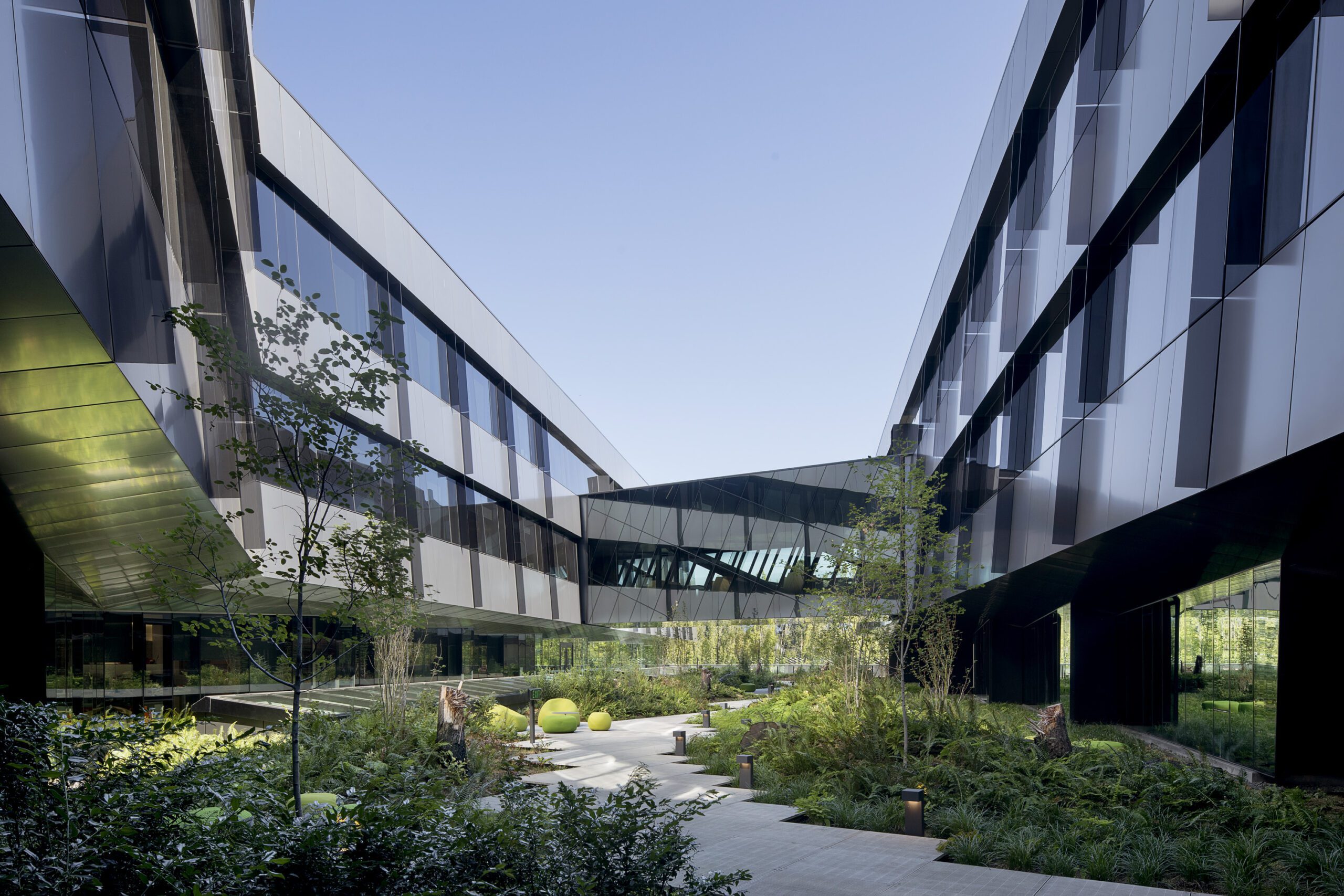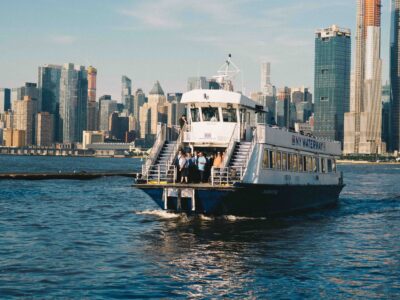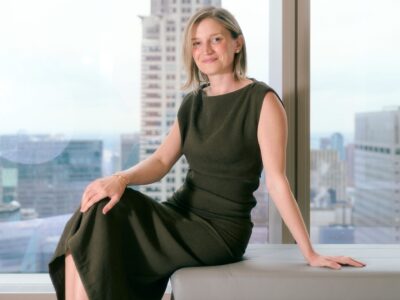King Richard may have been her father, but Nike has poised global tennis icon Serena Williams to be a queen in her own right and with a brand new eco-conscious castle.
The sportswear giant based out of Beaverton, Oregon, has officially cut the ribbon on its new 1 million square foot creativity hub at its corporate headquarters in the Beaver State.
Adorned with greenery and humble nods to the tennis star in the form of “Easter Eggs” like 23 pillars for the number of Grand Slams Williams has won, or the theater’s rose-shaped seat configuration (Williams’s favorite flower), and even an angled wall of the garden that matches Williams’s stroke trajectory, pieces of the athlete’s personal and professional journey and her impact on the world are integrated throughout. Nike has made meaningful and successful strides in sustainability, too, with the building. The new, environmentally-friendly build will house their design and product development teams in one location (previously, they were dispersed across the company’s sprawling HQ Campus) and help restore ecosystems on the land that have decayed over time. The building represents a move to a more circular approach to production, Nike said, as the company asks itself how it can be more sustainable moving forward.
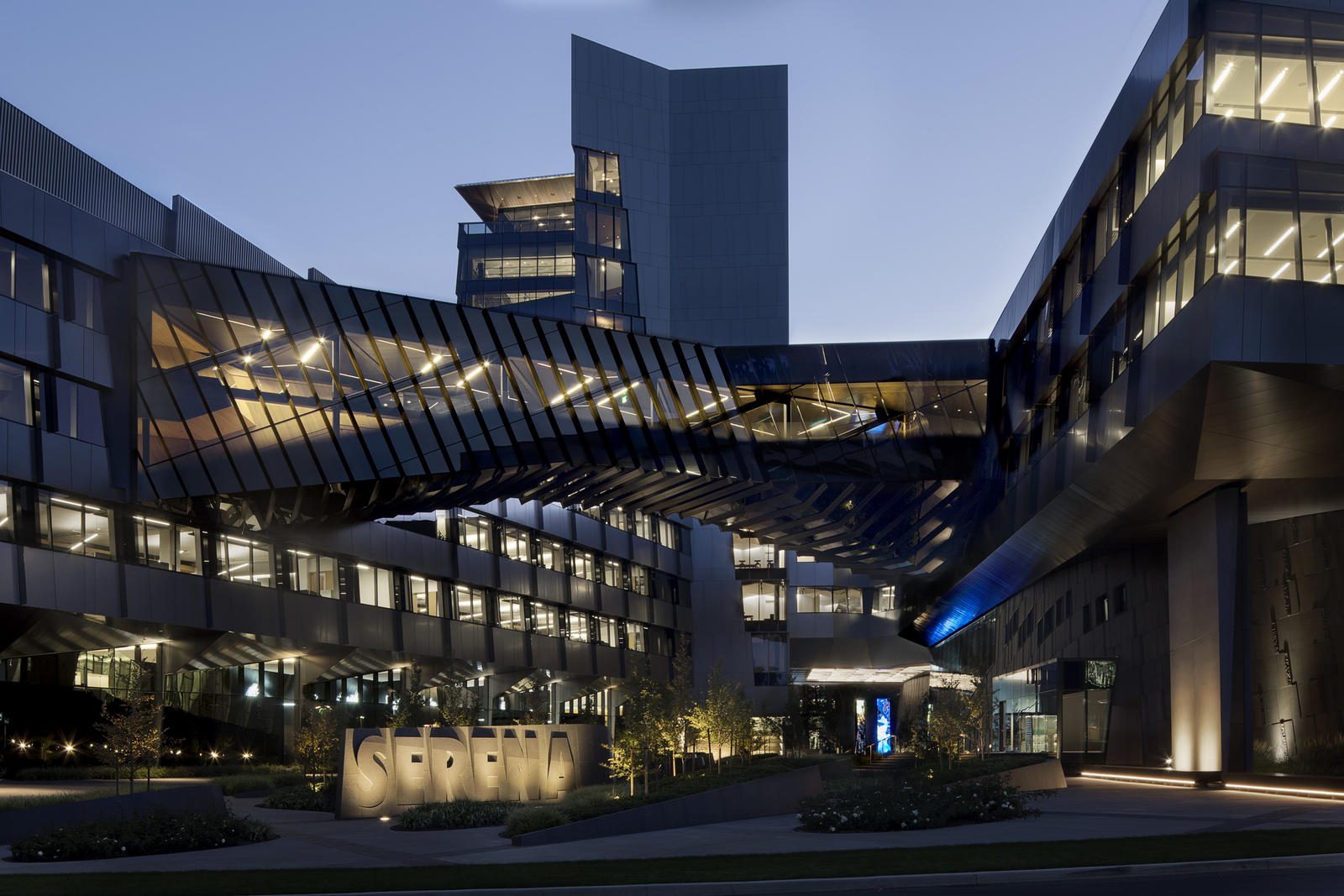
Nike was founded in 1964 under the name Blue Ribbon Sports, Inc. – a name held until 1971, when it rebranded as Nike and incorporated its now-ubiquitous “Swoosh” logo. The company was named after the ancient Greek goddess of victory, sometimes also spelled Niki, upon translation from the characters in the Greek alphabet. The brand quickly became a worldwide sensation, offering sportswear and accessories among other sport-specific subsidiaries such as Nike Golf.
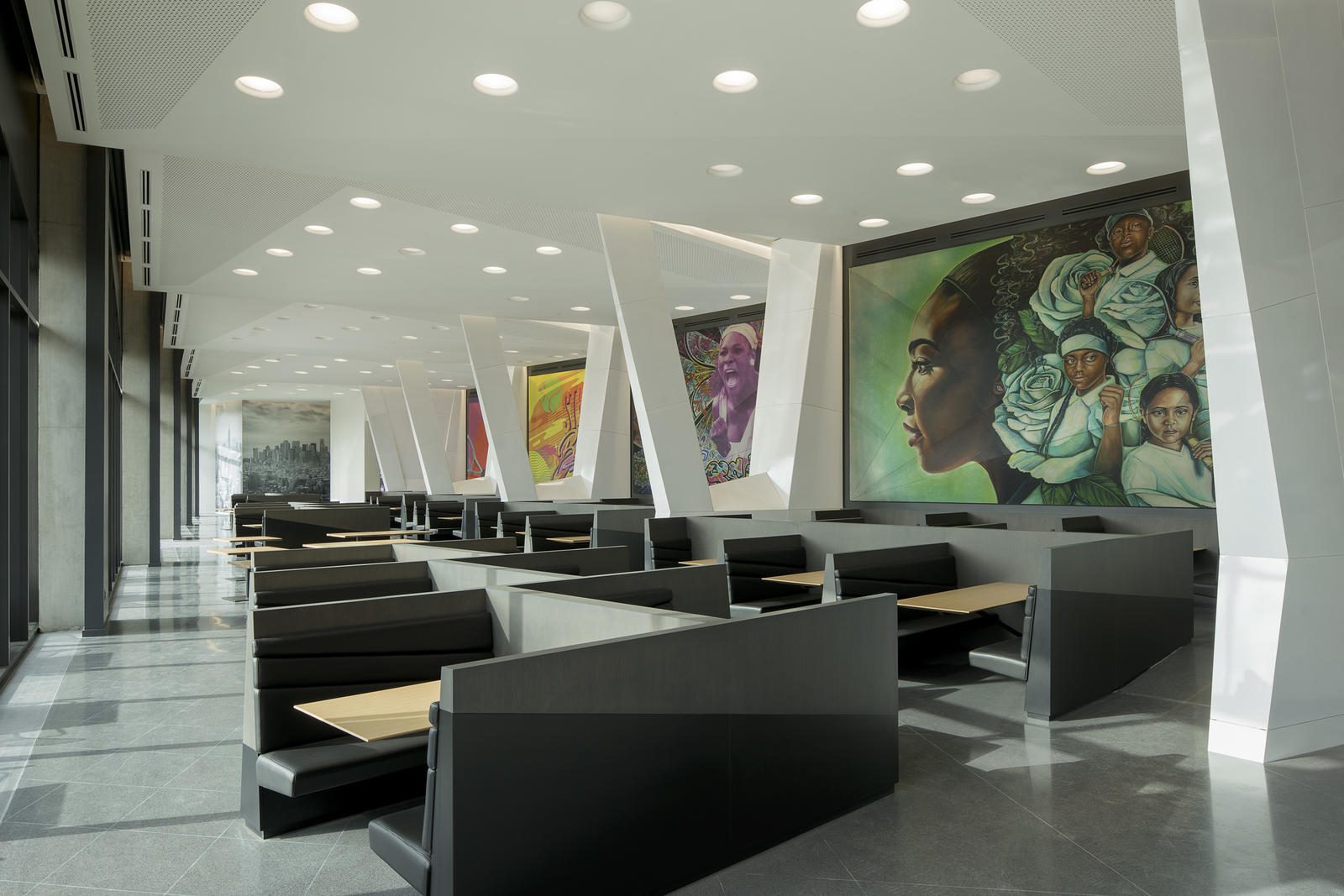
At the heart of its efforts in consumer goods is a greater effort – uniting people worldwide through sport. Throughout much of its rise to popularity in the 90s and early 2000s, the company adhered to a mantra that has since been cast aside, but offers a fresh perspective on physical activity: sport is a universal language. While the tagline was eventually replaced by the successful “Just Do It” campaign, visitors of the new building and headquarters as a whole have described the “Nikeisms” that are sprinkled throughout the structures and mindset, including “if you have a body, you’re an athlete,” “it’s OK to fail,” and “temporary is good,” with the latter promoting constant innovation.
In lockstep with that notion, Nike appears to have genuinely implemented its own advice with the new Serena Williams building regarding sustainability.
The building itself is the size of 140 full tennis courts. It has been Platinum LEED-certified – a globally standardized metric for measuring the impact of buildings, where Platinum signifies the least carbon footprint possible.
This is achieved and measured by various means, including energy efficiency, renewables usage, building materials, integration of green space and natural light, and more practical components such as air quality. The building was designed by Skylab Architecture, whose principal Susan Barnes said that even though the Serena Williams building has achieved the highest level of environmental performance, the design team and Nike “looked for ways to be platinum plus.”
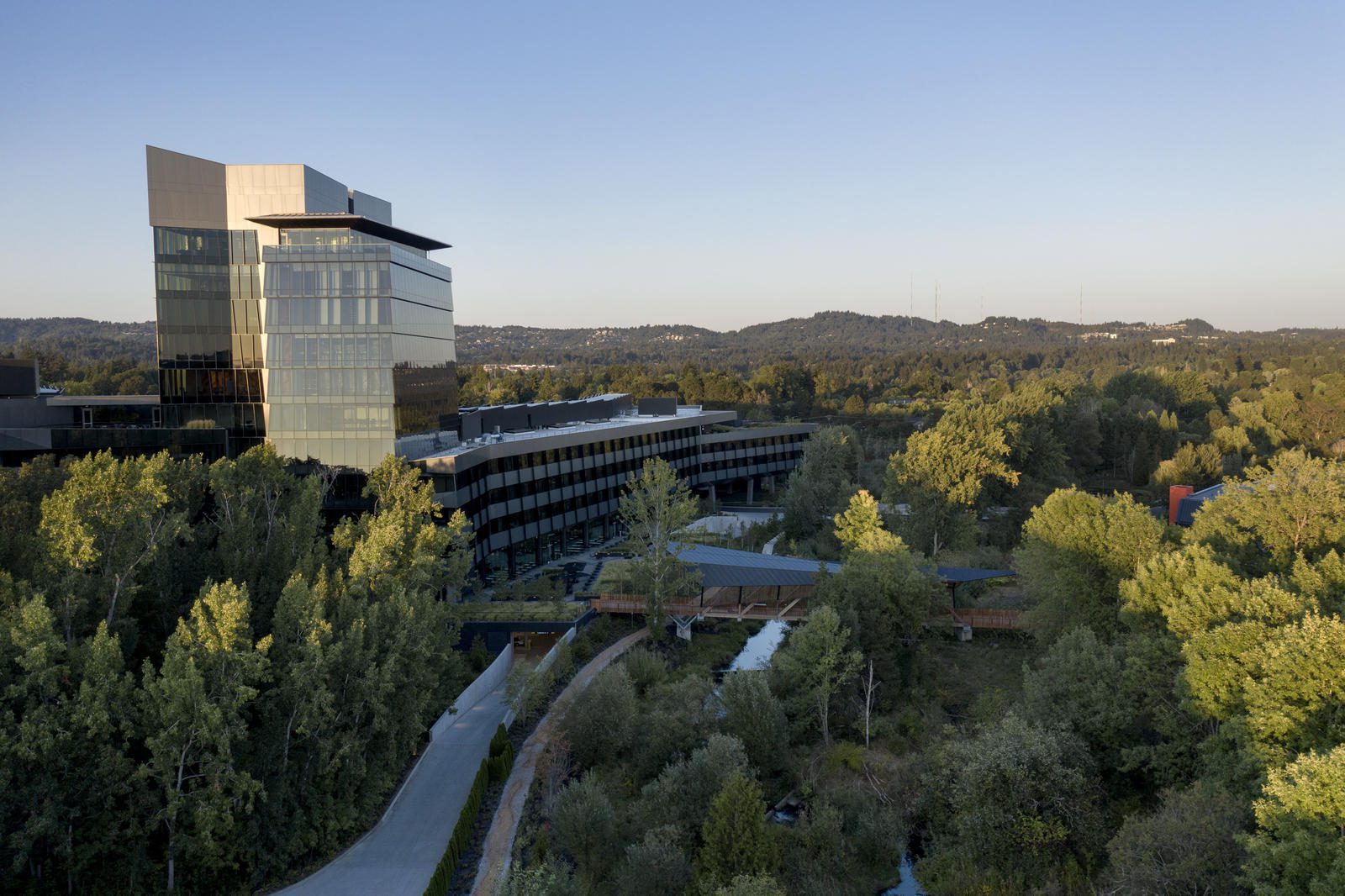
The building has also prompted wetlands remediation on the grounds, largely for beavers. One wetland bordered a delivery road, and the design firm decided to make the road underground, extending the wetland ecosystem.
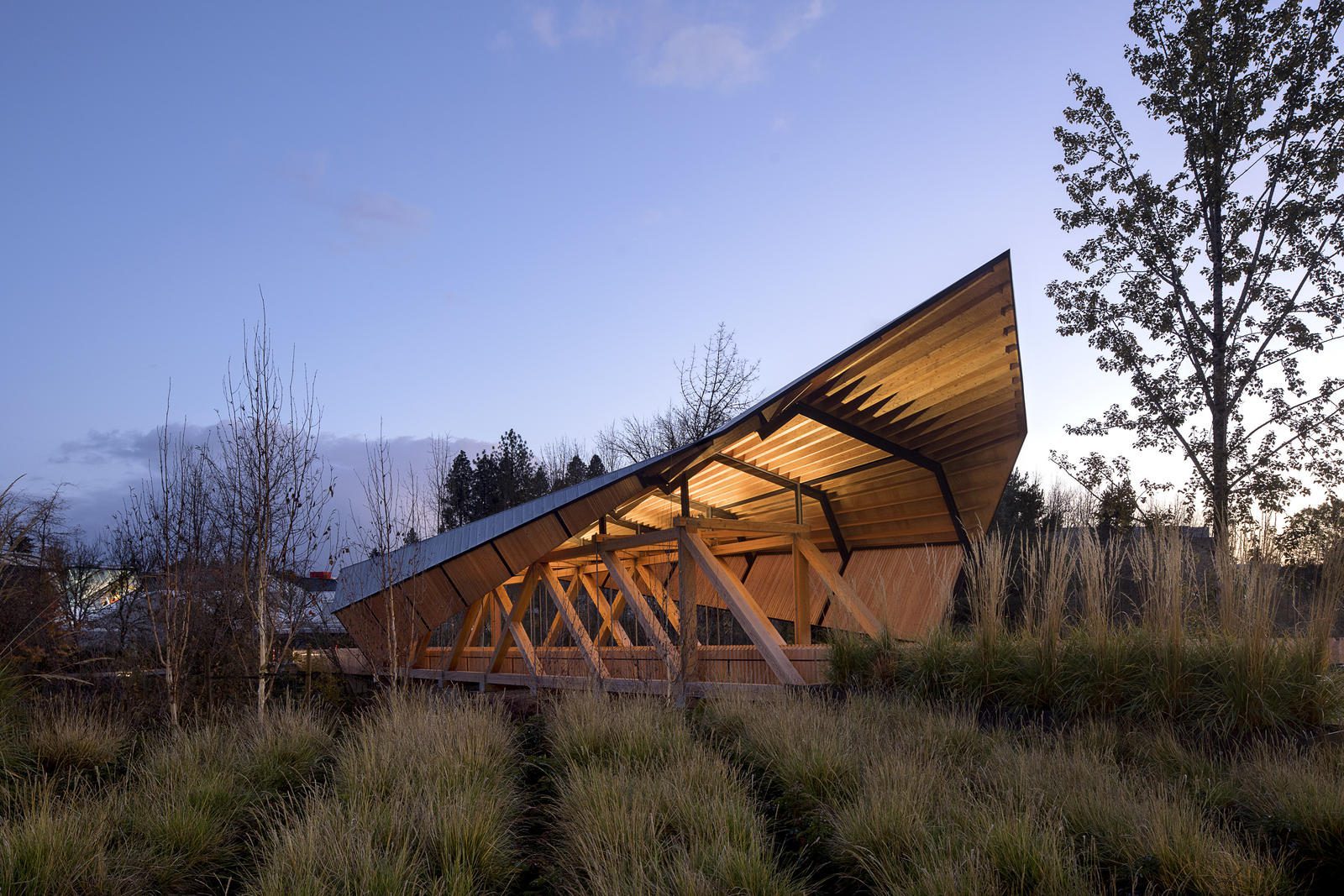
The initiative went hand in hand with another structure component: a building that has no formal “back.” While unconventional to some, designers say the move allowed them to maximize the spaces where there was an indoor-outdoor connection, bringing nature into the design without limiting where outdoor spaces would be favorably placed.
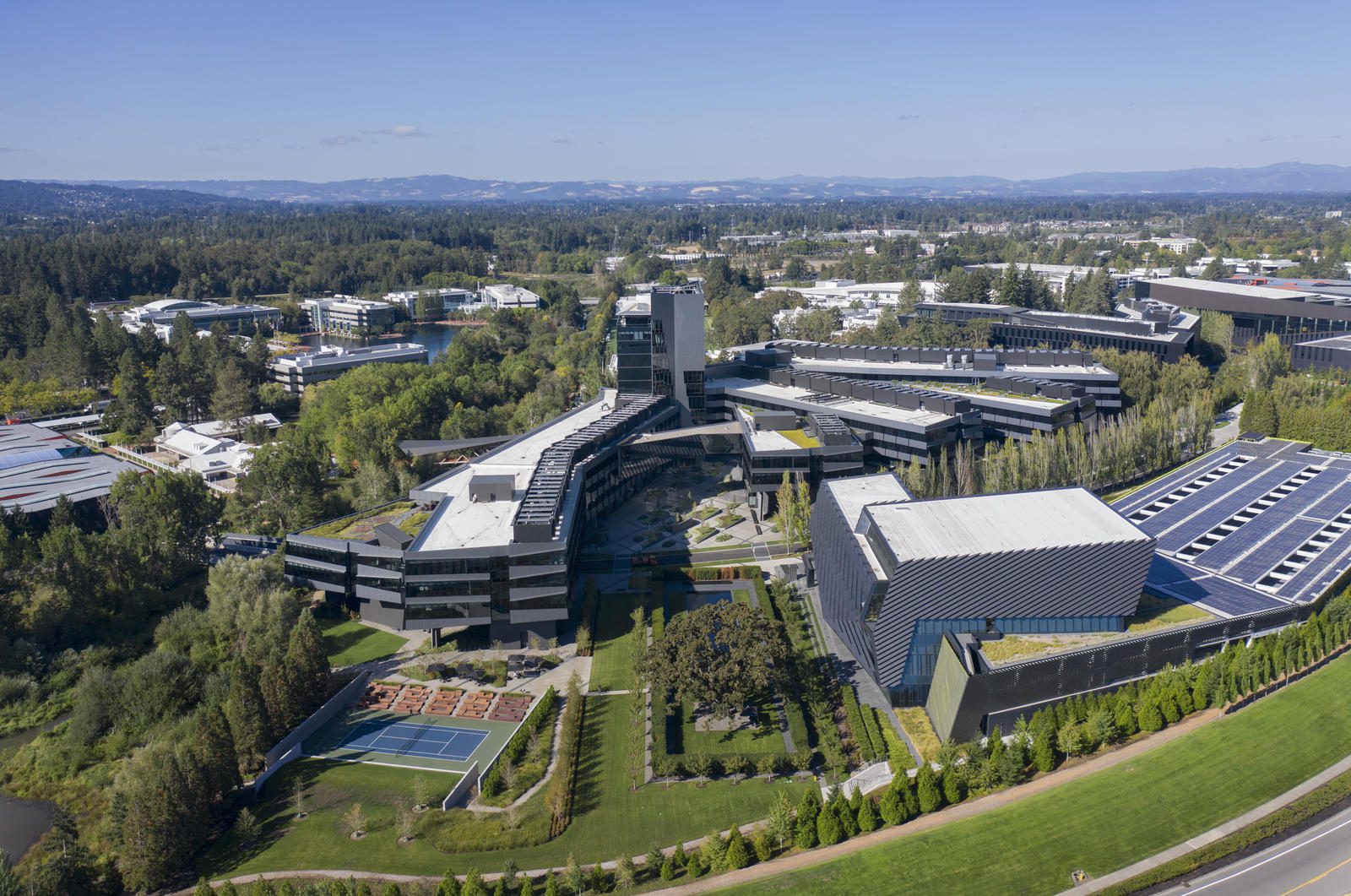
Design components are seemingly paired with sustainable practicalities throughout the structure. Photovoltaic solar panels, for example, are used to generate renewable energy for the Serena Williams building while also providing a “fifth facade,” as one of the designers stated. The panels also disguise typical mechanical systems on the roof, making for a more aesthetic view from some of the higher vantage points that look down on that section’s roofing.
In an interview, John Hoke, chief design officer at Nike, said that the building is “an edifice to her profession and the profession of sports, the change agency that she has had on and off the tennis court.” Hoke said Williams was an active collaborator in the product, adding that “like any great human, I think she just wants to have an impact…that is what we love about her.”

